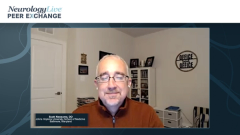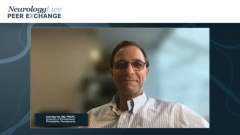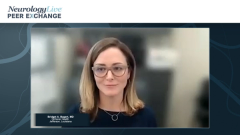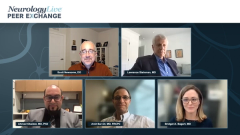
Moving From the Bench to the Bedside in MS Management
Amit Bar-Or, MD, FRCPC, and Bridget A. Bagert, MD, share their opinions on how to move investigative treatments for multiple sclerosis off the laboratory bench and into clinical practice.
Episodes in this series

Scott Newsome, DO: You guys have been talking and answering questions, but I have another question. I’m very interested to hear your thoughts. Amit, Bridget, what are your thoughts?
Bridget A. Bagert, MD: T-cell exhaustion is 1 of the theoretical factors of the difference between most of us who manage an Epstein-Barr virus [EBV] infection and people who develop MS [multiple sclerosis]. There’s something not working about the antiviral T cell. To understand that better, at some level it’s probably genetic. All these genes code for the immune system, which is also associated with MS. Are there environmental factors? We see this more in developed countries. Is it in our diet or in other exposures? We eat different from countries where MS doesn’t happen nearly as much. All those things need to be explored.
But in parallel, we need to dive into experimental treatments. We don’t need to wait anymore; we need to be bold and be ready to move forward with ideas that used to be crazy and fringe, like antiviral therapies. We have to do those studies now. Maybe there are other ways to attack the compartmentalized inflammation in progressive MS. We know anti-CD20 therapy is incredibly effective in relapsing MS, less so in progressive, and we know it’s because it doesn’t get into the brain. Are there other ways to get it in? Should we think about Ommaya reservoirs, as they do in B-cell lymphoma? Could that help progressive MS? The time for thinking boldly about treatments is now, but we also look more deeply at figuring out the rest of the mechanism.
Scott Newsome, DO: I love what you said about getting radical and just going, bringing from the bench to bedside. My main mentor, Peter Calabresi, early on when I was in fellowship, had some cool stuff happening in the lab. I was like, “Let’s put it in people. Let’s just do it because that’s the only way you’re going to find out whether it helps.” On the other side, you don’t want to harm people. But you have to take that risk if you feel like something is going to be completely dangerous.
Bridget A. Bagert, MD: Sure.
Scott Newsome, DO: This is why we do clinical trials in phases. But that’s how my brain thinks as well. Amit, what are your thoughts?
Amit Bar-Or, MD, FRCPC: I agree with everything that’s been said. As Larry said, it’s the right time for us to leverage these 2 amazing studies to get additional resources to study EBV in MS. To me, there’s little doubt that EBV is necessary for the development of MS. Clearly, it’s insufficient without the other pieces. We have to understand to what extent it is or isn’t driving ongoing MS disease activity, whether it’s relapse or progression. In some ways, if we can manage to get $100 million, $200 million for EBV research in MS or autoimmune disease more broadly, what do we put that money into? How can we figure out the most efficient way…to help us identify which are the moon shots we should go for vs others that we may not?
A thoughtful, logical approach is needed for using the resources that will likely pave the way to investing the most in what’s most likely to work, and figuring out as early as possible where not to go. As Larry had also said very early on, many careers were initially built that didn’t continue in the same vein to understand implications of viruses in MS, including EBV. There are good reasons; we still struggle with what to measure in terms of EBV biology or the immune response to EBV that’s relevant to the disease. How do we approach that, particularly in the context of EBV’s potential role within the CNS [central nervous system] compartment in progressive disease, as Bridget has said?
Scott Newsome, DO: I’ll ask you a follow-up question, Amit. You said this when I alluded to this at the beginning. Do you feel like EBV is conceptually doing 2 things? It starts the process, but then it also causes the kindling effect. Or is it 1 or the other? We don’t have answers to this yet, but it’s going to make a big difference in how we approach the treatment.
Amit Bar-Or, MD, FRCPC: That’s exactly right. It could do 3 things, and they’re not mutually exclusive. We can hang our hat on involvement in disease initiation or development of the disease. Is EBV responsible for some or all relapses? Is EBV driving progressive disease? If we interfere with its contribution to that, do we stop progressive disease and allow repair? Those are key questions. I agree completely: how could we design studies that will give us the most efficient and compelling answer 1 way or the other, so that we invest subsequent resources more wisely?
Transcsript Edited for Clarity
Newsletter
Keep your finger on the pulse of neurology—subscribe to NeurologyLive for expert interviews, new data, and breakthrough treatment updates.































